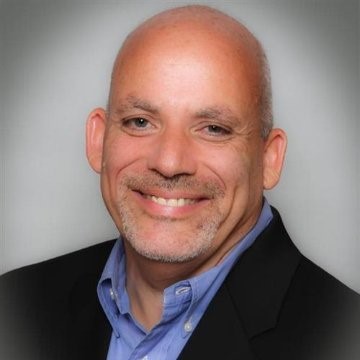
A few years ago – while I was serving an assisted living community in Ohio, my Director of Wellness and I were conducting a quarterly care plan review of all our residents. Many of the residents who had been under our care demonstrated the need for a higher level of care due to natural age related deterioration. It would cost between $25 to $50 per day or between $750 to $1500 per month to meet these additional needs.
Expansion of Care
The expansion of care would range from help with bathing, dressing, ambulating and getting in and out of bed in the morning to medical assistance. We observed that a resident entering a basic or starting level of care plan typically progressed to the next level within a span of 6 months. When we would meet with the family member to discuss the expanding care needs for their loved one – their responses would be mixed.
Many times, responsible parties would deny or disagree with our assessment and would demand proof. We were in a tough situation and it took months and months of conversations to convince the families. The changing care needs of our residents were fairly obvious to our care and wellness teams. However, providing evidence was not easy. Assessment reports, chequered with anecdotes of incidents often did not make the cut.
In retrospect, I sensed that many family members did not want the additional expense, either because they were unable to bear the incremental costs, or they would simply bury the issue attributing it to lack of evidence. Ironically, if resident care needs were not addressed, both the resident and the facility were at risk.
Facilities, in their mission and quest to do the right thing, often lost money providing care for many of these residents with increasing acute conditions at their own expense when they could not pass on the additional costs to the family members. As a result, they were taking a hit on their operating margins. Inevitably the quality of services including resident care was impacted.
During the aging process many residents have greater need for medical assistance. The additional cost of medical assistance is disproportionately higher which causes friction between the family members and the community staff.
Technology was not available at the time to monitor and provide evidence of residents’ growing care needs based on their activities and behavior.
The recent article The Skilled Nursing Death Dance in Senior Living Foresight eloquently shines a light on this issue and points out the challenges of the current care delivery model within nursing homes, already fraught with economic and operational challenges.
AMDA has been making a case for integrating medical care into assisted living – primarily because skilled nursing in recent years has transformed into something more akin to an acute care facility. Hospital discharge resulting in a 30 day readmission adversely impacts all facility types, regardless of whether they are skilled nursing or assisted living facilities.
Quality of living and care continues to get hit, from rising costs, inflation and labor shortage.
While the Green House Model, which promised to address the quality of care through the creation of small, residential‐style houses located in community neighborhoods has been marginally successful, the operational challenges even for GH model communities remain the same. As more and more care turns clinical, the need for more medically-assisted care increases.
Infact, one could argue that a smaller facility might be even more challenged to absorb the cost of medical care, when families are unable to pay.
Clinical care requires regulatory oversight and the more the regulatory processes to adhere to, there is direct impact to costs. An increased level of transparency is expected, which not only creates exposure risk, but also threatens to make the business unsustainable.
Regulation and Compliance
The Joint Commission recently announced the availability of Assisted Living Community Accreditation Program. While this is a welcome move and a huge milestone step towards creating common standards for assisted living communities, the additional cost of compliance can be overwhelming to an already burdened cost of care delivery.
One way to overcome the challenges to meet these regulatory requirements is extensive use of passive monitoring technology. Monitoring devices have reached the level of sophistication and technological prowess, where they can be deployed to handle simple as well as complex tasks. The use of Artificial Intelligence (AI), with powerful computing technology, the processing of massive amounts of data becomes easier resulting in quicker availability of actionable information. Recording, transformation and analysis of data can produce the evidentiary information needed to back up and justify the awkward family conversations on care costs.
In many situations, technology approved by FDA and covered under a variety of insurance plans, makes it easy for facilities to get payor reimbursements for the technology and defray some of the costs of technology adoption. As more medical care gets integrated into assisted living, physician participation at facilities automatically increases which in turn drives the care quality. An added benefit is that it also simplifies any payor reimbursement related workflows.
Adhering to regulatory procedures automatically becomes second nature. The increased transparency, quickly identifies the areas of concern, thus giving facilities an upper hand in addressing them proactively. Increased transparency is an excellent promotional tool, while creating the much needed trust with families.
Did you find the strategies listed in this article helpful? What are some of the ways you did to address the challenge of growing cost of care within your facility? How have they worked for you? Please share in the comments below.
About the Author

David Carter
LNHA and Head of Business Development, Zemplee Inc.
I have had the great fortune of serving our most vulnerable population as a licensed nursing home administrator and executive director since 1984. During this journey I have faced many challenges with operating communities that had poor physical plants, staffing challenges, financial challenges, market saturation, substandard compliance history and a poor staff culture.
Every day I convinced myself to address these challenges with a positive and upbeat attitude. The reward was observing the team’s ultimate positive response and improved care delivery outcomes. During the past 18 months our industry has been challenged like never before. We all need to tap into our positive side and spread this energy to everyone we touch. I am thrilled to continue to impact an industry that has been often criticized and under appreciated even though we care for our most vulnerable citizens who need us more now than ever.
Click here for more information on Zemplee

